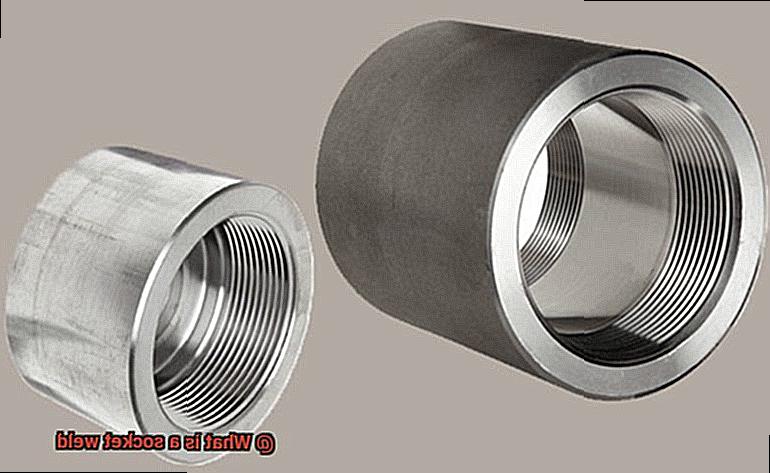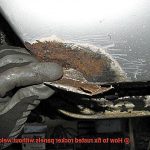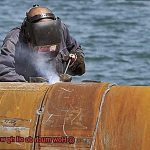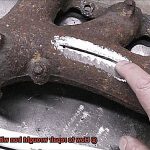Have you ever paused to ponder over the tiny yet crucial components that hold together our modern world?
Enter the socket weld, an indispensable element in joining pipes across a multitude of industries. Socket welding is a type of weld used for connecting pipes where a seamless and uninterrupted flow is desired.
It produces a joint that is more compact and robust than other welding methods, making it the preferred choice for high-pressure environments. The process of socket welding involves using a cylindrical pipe fitting with an internal recess to insert the end of the pipe.
An electrode made typically of tungsten generates heat required to melt and fuse metals, thereby creating a smooth and sturdy joint that upholds piping system integrity. Socket welds offer numerous advantages such as precise joining accuracy, durability, strength, and resistance to high levels of pressure and heat.
These features make them ideal for use in industries like oil and gas, chemical processing, and steam systems. In conclusion, while socket welds may seem small on their own, they play an enormous role in keeping various industries running smoothly.
Socket welds are essential components that contribute significantly to our world’s growth and progress.
Benefits of Socket Welds
Contents
If you’re looking for a welding solution that can withstand extreme conditions, look no further than socket welds.
These sturdy welds offer several benefits over other welding methods, making them a popular choice in various industries. One of the most significant advantages of socket welds is their exceptional strength and durability.
Comparable to the base metal, the welded joint can handle high pressure and temperature applications with ease. It’s like having a superhero on your side, ready to take on any challenge.
But it’s not just about strength – socket welds are also incredibly clean. The welding process involves inserting the pipe into the socket, which means there’s minimal or no welding spatter or slag left behind.
This makes the process more efficient and less time-consuming since there’s no need for post-weld cleaning. It’s like painting a wall with a neat and tidy brush – no mess, no fuss.
In addition to being clean, socket welds provide a smooth and continuous flow path. This reduces turbulence and pressure drop, which is crucial in applications where fluid or gas flow must be maintained at a constant rate.
It’s like having a clear highway ahead of you, with no obstructions or roadblocks. Socket welds are also easy to inspect visually, ensuring that there are no defects or cracks in the weld joint.
This is crucial in ensuring safety and preventing leaks or other issues that could cause damage or harm. It’s like checking your car’s brakes before heading out on a long journey – you want to make sure everything is in good condition before hitting the road.
Last but not least, socket welds require less filler material than other types of welds, making them a cost-effective option for welding pipes and fittings. They’re also more resistant to corrosion due to their smooth surface, which makes them suitable for use in corrosive environments.
It’s like investing in a high-quality product that lasts longer and requires less maintenance – it may cost more upfront, but it pays off in the long run. In summary, socket welds offer several benefits that make them an excellent choice for various industrial applications.
These include high strength and durability, cleanliness, smooth flow path, ease of inspection, cost-effectiveness, and corrosion resistance.
Differences Between Socket Welds and Butt Welds
When it comes to welding, there are two main types of welds in the industry: socket welds and butt welds.
Although they share some similarities, these techniques have notable differences that set them apart. The primary difference between socket welds and butt welds is the way they are welded.
Socket welds are ideal for smaller diameter pipes, where the joint is created by inserting the pipe into a socket or hole and welding the two pieces together around the perimeter of the socket. On the other hand, butt welds are perfect for larger diameter pipes, where the joint is formed by welding the two pieces end-to-end.
Another difference between these two types of welds is the kind of joint they create. Socket welds produce a fillet-type joint, which forms a triangular-shaped joint when two surfaces join at an angle of less than 180 degrees.
In contrast, butt welds create a butt-type joint, where two surfaces join end-to-end to form a flat surface. The level of skill required to perform each type of weld also varies.
Socket welds are generally easier to execute than butt welds because they require less preparation and are easier to align. However, both types of welds can produce strong joints if performed correctly.
However, both techniques can produce robust joints when applied correctly.
Preparing for a Socket Weld
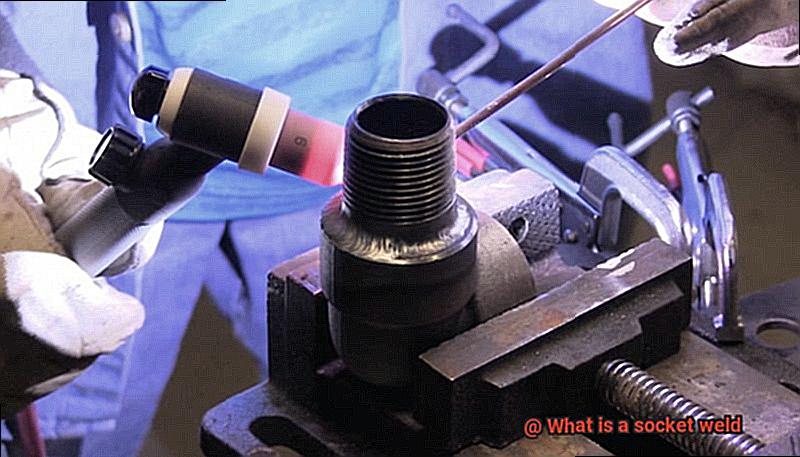
Now, we’re going to dive into the nitty-gritty of preparing for a socket weld.
This is a critical step that can make or break the quality of your weld joint. It’s like building a strong foundation before constructing a house – you want to ensure everything is in place before proceeding.
So, let’s get started.
First off, check the fit-up of the joint.
It’s essential to align the pipes or fittings correctly to achieve proper penetration and avoid weak welds. Think of it like assembling a puzzle; if the pieces don’t fit perfectly, the final product won’t look great.
Next, cleanliness is crucial. Thoroughly clean the surfaces to be welded to remove any contaminants such as oil, rust, or dirt.
Think of it like preparing a canvas before painting; you wouldn’t want to paint over old chipped paint without cleaning and sanding first.
Once the surfaces are clean, tack-welding is necessary to keep everything in place during the welding process.
Tack-welding involves making small welds at intervals along the joint. Think of it like using clips to hold pages together while reading a book.
Selecting the correct electrode is also essential. A low hydrogen electrode is typically used for socket welding because it produces high-quality, strong welds with excellent toughness.
Think of it like choosing the right tool for the job; you wouldn’t use a hammer to screw in a nail.
Finally, preheating the material is critical to prevent cracking and ensure proper fusion of the metal.
The preheat temperature should be based on the thickness of the material being welded and can range from 150°C to 300°C. Think of it like warming up your car engine on a cold winter morning; you need to get everything ready beforehand.
In conclusion, preparing for a socket weld involves proper fit-up, cleanliness, tack-welding, electrode selection, and preheating. It may seem like a lot of work, but trust us, it’s worth it in the end.
Executing a Socket Weld
Socket welding involves fusing two metal pieces together using a socket welder, which heats the metal and applies pressure to create a tight seal. But what makes socket welding stand out from other techniques, and how can you execute it flawlessly?
One of the key benefits of socket welding lies in its resistance to corrosion and other environmental factors. Unlike other welding techniques, there’s no need for additional materials such as filler rods or flux, making it less likely for the joint to fail over time.
Moreover, socket welding is versatile and can be used on pipes and fittings of various shapes and sizes, making it a go-to option for many welding applications. To execute a socket weld to perfection, attention to detail is crucial.
Begin by thoroughly cleaning the metal pieces before welding. Then, use the socket welder correctly to ensure a robust and secure joint.
Mindful of the temperature of the metal pieces during welding as overheating weakens the joint and could cause future problems. Think of socket welding as a puzzle; each piece must fit perfectly into place for the final product to be strong and durable.
As you gain experience, you’ll become an expert in this specialized welding technique, creating joints that stand the test of time. In summary, socket welding is an efficient way to create strong, leak-free joints resistant to corrosion and other environmental factors.
Common Applications for Socket Welds
Socket welds are the backbone of piping systems in a wide range of industries – from refineries to chemical plants to power generation facilities.
These connectors are preferred for their incredible strength and durability, which make them ideal for use in environments where high pressure, high temperature, or corrosive substances are present. In refineries, socket welds are used to connect piping systems that transport crude oil, gasoline, and other petroleum products.
These systems operate under extreme conditions, making the use of socket welds crucial for ensuring the safety and reliability of the equipment. Socket welds create a secure connection that can withstand the demands of high pressure and high temperature systems, giving workers peace of mind knowing that they’re well-protected.
Chemical plants also rely heavily on socket welds for their piping systems. The chemicals being transported can be highly corrosive, which means that the welds must be able to withstand the harsh environment without deteriorating.
Socket welds provide a reliable connection that can handle even the most demanding applications. In power generation facilities, socket welds are used in various systems such as steam lines, water lines, and fuel lines.
These systems operate under extreme conditions and require a strong and reliable connection. Socket welds provide the necessary strength and durability to ensure the safe and efficient operation of the equipment.
They play a vital role in ensuring the safety and efficiency of equipment in industries where hazardous materials or extreme conditions are present.
Troubleshooting and Maintenance Tips
These essential components of many piping systems can experience issues like cracking, porosity, or incomplete penetration if not properly maintained. In this article, I will share five practical tips that will help welders avoid common issues and ensure that their socket welds perform optimally.
Proper Preparation
The first step to achieving a strong and durable socket weld is to ensure that the joint is clean and free of any contaminants before beginning the welding process.
Welders can accomplish this by using a wire brush or grinder to remove any rust, dirt, or oil from the joint. Additionally, it is crucial to ensure that the weld preparation is correct and that the gap between the pipe and fitting is within acceptable tolerances.
Appropriate Filler Metal
Choosing the right filler metal for socket welds is crucial to achieving a strong and durable joint. The filler metal should match the base material in terms of composition and mechanical properties.
Choosing the appropriate filler metal is like finding the perfect puzzle piece that fits perfectly with the others.
Correct Welding Technique
Socket welds are typically made using a fillet weld technique, which involves welding along the joint’s corner. It is essential to choose the correct electrode size and welding current to achieve a strong and durable weld.
It is also important to ensure that the heat input is sufficient to achieve proper fusion but not too high as to cause overheating or burn-through. Taking your time during this process is like cooking a steak – you want to sear it just right without overcooking it.
Regular Inspection and Maintenance
Regular inspection and maintenance are critical to ensuring socket weld longevity and performance. Inspect socket welds periodically for any signs of damage or wear, such as cracks or corrosion.
Any defects should be repaired immediately to prevent further damage or failure of the joint. Think of it like taking your car in for a check-up – you want to catch any issues before they become big problems.
Monitor Socket Weld Gap
During maintenance inspections, it’s crucial to monitor the socket weld gap carefully. The gap should not exceed the recommended range specified by the manufacturer or applicable code. Excessive gap can result in poor weld quality and reduced joint strength.
So, by following these tips, welders can avoid common issues like cracking or incomplete penetration and ensure that their socket welds are strong, durable, and reliable for years to come.
Proper preparation, choosing wisely, taking your time, regular inspections, and monitoring of socket weld gap are all essential for trouble-free socket weld joints.
vtjQd1EOl20″ >
Conclusion
In today’s fast-paced world, we tend to overlook the small yet vital components that hold our industries together.
One such component is the socket weld, a crucial element in connecting pipes across multiple sectors. Socket welding produces a joint that is compact and sturdy, making it the preferred choice for high-pressure environments.
Socket welds offer many advantages such as accuracy, durability, strength, and resistance to high levels of pressure and heat. These features make them ideal for use in industries like oil and gas, chemical processing, and steam systems.
Additionally, socket welds are incredibly clean with minimal or no welding spatter or slag left behind. To prepare for a socket weld, proper fit-up, cleanliness, tack-welding, electrode selection, and preheating are essential.
Executing a socket weld requires attention to detail to ensure a robust and secure joint. Socket welds find usage in various systems such as steam lines, water lines, fuel lines in refineries, chemical plants and power generation facilities.
However, if not correctly maintained or inspected regularly, they can experience issues like cracking or incomplete penetration.
